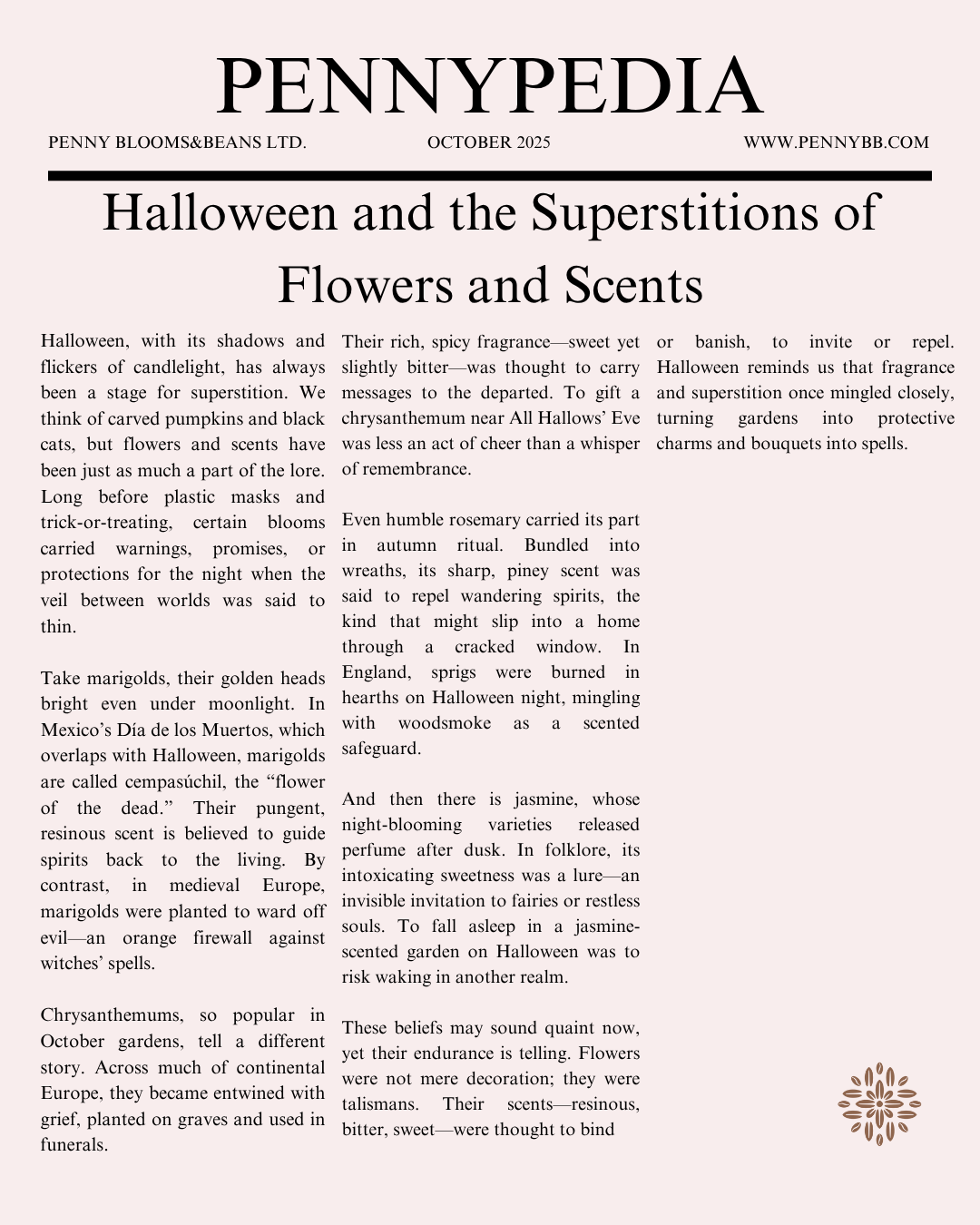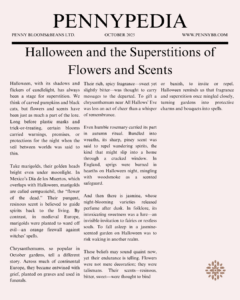
05 Oct Halloween and the Superstitions of Flowers and Scents
 Halloween, with its shadows and flickers of candlelight, has always been a stage for superstition. We think of carved pumpkins and black cats, but flowers and scents have been just as much a part of the lore. Long before plastic masks and trick-or-treating, certain blooms carried warnings, promises, or protections for the night when the veil between worlds was said to thin.
Halloween, with its shadows and flickers of candlelight, has always been a stage for superstition. We think of carved pumpkins and black cats, but flowers and scents have been just as much a part of the lore. Long before plastic masks and trick-or-treating, certain blooms carried warnings, promises, or protections for the night when the veil between worlds was said to thin.
Take marigolds, their golden heads bright even under moonlight. In Mexico’s Día de los Muertos, which overlaps with Halloween, marigolds are called cempasúchil, the “flower of the dead.” Their pungent, resinous scent is believed to guide spirits back to the living. By contrast, in medieval Europe, marigolds were planted to ward off evil—an orange firewall against witches’ spells.
Chrysanthemums, so popular in October gardens, tell a different story. Across much of continental Europe, they became entwined with grief, planted on graves and used in funerals. Their rich, spicy fragrance—sweet yet slightly bitter—was thought to carry messages to the departed. To gift a chrysanthemum near All Hallows’ Eve was less an act of cheer than a whisper of remembrance.
Even humble rosemary carried its part in autumn ritual. Bundled into wreaths, its sharp, piney scent was said to repel wandering spirits, the kind that might slip into a home through a cracked window. In England, sprigs were burned in hearths on Halloween night, mingling with woodsmoke as a scented safeguard.
And then there is jasmine, whose night-blooming varieties released perfume after dusk. In folklore, its intoxicating sweetness was a lure—an invisible invitation to fairies or restless souls. To fall asleep in a jasmine-scented garden on Halloween was to risk waking in another realm.
These beliefs may sound quaint now, yet their endurance is telling. Flowers were not mere decoration; they were talismans. Their scents—resinous, bitter, sweet—were thought to bind or banish, to invite or repel. Halloween reminds us that fragrance and superstition once mingled closely, turning gardens into protective charms and bouquets into spells.
